Inside the Colosseum 18 Mar 2021 11:29 AM (4 years ago)

Inside the Colosseum
We’ve all heard of the Colosseum. Rome’s most famous attraction and certainly one of the world’s most recognizable monuments, the Colosseum has made countless cameos over the millennia, from movies and paintings, to photographs and daydreams. I, like everyone else who’s had the opportunity to visit, have always thought the Colosseum was magnificent and stunning, a perfect place to spend an afternoon strolling around. What’s more whimsical than getting an espresso from different vantage points around a nearly 2,000 year old amphitheater to create your iconic Roman memory? But going inside, that’s something I hardly ever do, and honestly, I tend to steer our guests away from it.
Now, I hate crowds. You might be thinking, “Hey Blaine, aren’t you a tourism professional? Isn’t weaving through crowds one of the main parts of your job?” And yes, you’re right. Even though I am only a tour guide on occasion and more of the vacation planner, dealing with and instructing people how to deal with crowds is a huge aspect of my work. I’m not a fan, especially in the blazing, suffocating Roman summer, which is when most people tend to visit. I love a good story, but paying attention to dates and names while I’m elbowing a throng of middle schoolers to keep their distance is not my idea of a good time. However, I’m dating a historian, who cannot be bridled in his love for curiosity of antiquity. So, begrudgingly, I sometimes lift the edges of my mouth in what passes for a smile and prepare to be educated, while I strike a defensive pose and put on my RBF.

Workin’ on a Night Mood
This year, however, there’s been none of that. As treacherous and overwhelming as our lives have been, one ‘good’ thing as a resident of Rome has been the lack of crowds. We’re living in an ancient city with little to no tourism, which is harrowing and stunningly beautiful at the same time. So, I took advantage of this unusual circumstance and let my historian take me inside the Colosseum for only my 2nd visit, in what can only be identified as a once in a lifetime situation.
There was truly nobody there. In the 2 hours we spent inside, I’d say we saw 40 other people, in total. This is undoubtedly the only way to travel: in cool and sunny weather, with minimal other visitors, and with your own personal nerd. When given this opportunity to viscerally experience something in a way few ever have before, I couldn’t help but be absolutely awed by my encounter. THIS is what I’ve been missing this whole time. I’m so easily distracted and overwhelmed by people and heat and selfies that I’ve never truly allowed myself to be present and aware while observing this ancient and extraordinary location.

A different perspective…
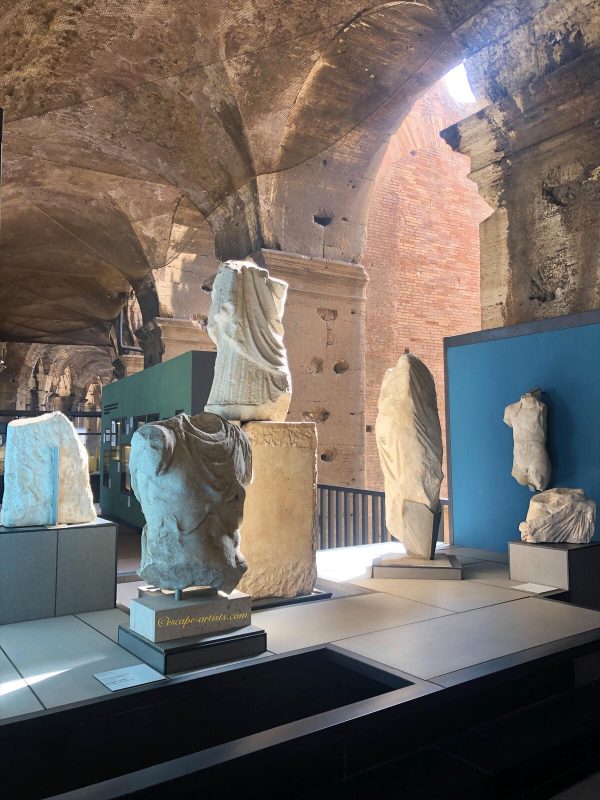
Ancient artifacts are always on display
It’s easy to imagine yourself here 2,000 years ago. They have different levels and gates and entrances, much like our modern day stadiums do. There’s graffiti etched into the walls, memorializing superstars and monumental events, and even the random H Roberti was here from the 18th century that somehow hasn’t lost its charm today. On display there’s seeds and bones of discarded goodies, from dates to stuffed mice, which were once a popular snack at sporting events. The most expensive seats are just above stage level, where senators and diplomats would sit, surrounding the Emperor’s Box, with the clearest view of all. The farther up you go, the less expensive and more gaudy the company was. Women, with the exception of the eminent Vestal Virgins, were generally not allowed to these events as the games were seen as too violent for their delicate sensibilities. There were only 2 toilets in the whole arena and they certainly did not have self flushing mechanisms.

H Roberti was here (ironically not as clear now that it’s been cleaned up)
Yet, the fantasy is still there. Looking down at the intricate maze underneath where the sand-covered floor would have been, you can see the ‘backstage’ of the whole spectacle. Hidden out of sight, this is where gladiators would wait for their cue to enter, where animals would be caged in waiting, where a whole circumference of pathway would’ve been used by the slaves to keep the show running. The performances were not necessarily a demonstration of gore, as gladiators were popular sports personalities, and needlessly having them fight to the death wouldn’t have been good for sales or morale. Tales were usually told of gods and epic battles which were then recreated, as theater might do today.
Public executions however, would certainly take place for the most dastardly of criminals or enemies, the most horrifying one I’ve heard of depicting the myth of Icarus, who flew too close to the sun. An actor played out the whole scene, but once the chariot rose high above the crowds, supposedly skimming the sky, the criminal was swapped in and left to drop to his death. While these stories and gruesome events are the ones that are most remembered, there was plenty of entertainment for a couple hundred years that wasn’t stomach churning.

The white ring shows where the backstage slaves would have kept the show running

Looking out onto the Palatine Hill
Visiting this magnificent monument in this way was certainly an eye opening experience for me. I have endless pictures of the Colosseum’s facade, with my coffee or Spritz in the foreground, seen as an outsider. But done correctly, and with someone passionate at your side, I’ve become a believer that the Colosseum is truly an unmissable event.

Proof that I’m still a tourist at heart
The post Inside the Colosseum appeared first on Escape Artists.
Street Art in Torpignattara 8 Feb 2021 9:52 AM (4 years ago)

The Submarine Thinker by Carlos Atoche

The Owl by Diavù

Il Vecchietto by C215
The post Street Art in Torpignattara appeared first on Escape Artists.
Dual Citizenship with Italy 25 Jan 2021 8:47 AM (4 years ago)

How to become an Italian-American citizen!
Have you ever considered applying for dual citizenship with Italy? Cause you could be eligible through your family line without sacrificing your American nationality. In 1992, Italy made it possible to apply for dual citizenship, then loosened the requirements about 15 years ago, so the maternal line is now eligible! If you have any ties back to our favorite boot shaped country, you could be in luck. If you are of Italian descent and the Italian in question had not naturalized as a citizen in another country before the familial connection was born, you are generally able to apply to become an Italian citizen. Sound complicated? Don’t worry, it is.
How is this all possible?
Surprisingly, amorous Italy has one of the lowest birth rates in the world, due to all the young people moving into the big cities or out of the country for work. Women can now pursue education and aren’t so reliant on having a man bless her with many babies in order to be a conventional part of society. So, Italy decided to open up its doors to outsiders, in a move less of bureaucratic open-heartedness and more of desperation. Now, Italian culture is granting many people back into its beautiful land with dual citizenship, presumably with the hopes of repatriation and repopulation of the Italian way of life. While this is good news for you, Italian passport hopeful, this in no way means the process has become easier or more streamlined. It took my mother Elizabeth over 3 years and me over 5 to complete this whole song and dance. If you’re looking for an easy way in, citizenship through ancestry may not be for you.
Where do I start with dual citizenship?
Elizabeth comes from Italian descent, her grandparents being from from Campania and Calabria. We started tracing her family’s roots to re-establish our connection with Italy in the early 2000s, and that’s how this whole Escape Artists thing started. So, that’s where you should begin, by locating for your link back to Italy. Start asking grandparents, aunts and uncles, cousins twice removed that still live back east. Find the person that you can legally prove is your ancestor and begin amassing documents. You’re going to need EVERYTHING: birth, death, and marriage certificates, divorce ones as well if applicable. Gather your precious papers together for each link between you and your Italian family member and make copies, just in case.
Don’t worry if this already seems stressful, we are here to help you navigate the murky waters of red tape in applying for dual citizenship of Italy and the US. In true Italian style, the government is in zero rush to aid any prospective citizens, and functions at a molasses pace. The average contact at your city’s consulate is an hourly employee with no incentives, generally coming from a very Mediterranean work ethic with a lot of cigarette and coffee breaks. Remember, I adore this culture and the people, but stereotypically, they are not known for their high rate of productivity.
What kind of challenges am I facing?
The hardest part of getting citizenship in Italy is compiling all of the exact documents needed, then sludging through the long waiting periods to actually get things done. You need to be prepared for anything. Some certificates won’t be obtainable unless you physically go to the city hall or main church of the town of your heritage. There is no separation of church and state here, so sometimes what you’re looking for can only be found in an oversized leather bound book, located by a grumpy old priest who’s only in the office from 10-12 on Tuesdays and Fridays. Even after you have everything, actual appointments can come with at least a 5 month waiting period, especially in these pandemic times.
Once your appointment time has mercifully arrived, have copies and originals of everything. Show up with a stamped envelope, just in case. Have exact change of all amounts. If your total is $83.24, you better have exactly $83.24, because they are not making you change nor are they holding your appointment so you can run out to 7-11 and try to convince a clerk to break a $1 bill for you. No, they don’t accept checks or credit cards. Every little thing must be translated and apostilled (certified by a notary public), and it will be highly scrutinized. You must follow the all the rules exactly and should learn a few phrases of Italian along the way, if only just to make a good impression. And remember, bringing along a box of donuts for the office never hurt anyone.
What if I get overwhelmed??
Don’t fear, that’s what we’re here for! Contact us to discuss your eligibility and how we can assist you in your dream of becoming an Italian citizen, whether you’re just starting or only have one form left to go. Let Escape Artists be your guide!

The post Dual Citizenship with Italy appeared first on Escape Artists.
Visit Villa Pamphili! 15 Jun 2020 5:06 AM (4 years ago)

Lago del Belvedere in Villa Pamphili
Come take a stroll with me as I wander through the beautiful park of Villa Pamphili. Still virtually unknown to tourists, this stunning oasis shares an authentic Italian experience with anyone who passes along its dusty roads. Once a private villa and hunting grounds for the noble family of its name in the 1600s, this park is now fully open to the public for sports and picnics alike. Perfect for all kinds of recreation, Romans flock to this natural haven, especially during the punishing heat of the summer, and lounge in the expansive green grass by the multiple lakes.
Full of little playgrounds, outdoor gym equipment, and doggie zones, you’ll find everything from families and jogging buddies to swans and foxes sharing the natural beauty. And while the Villa itself is closed to the public, you can still admire its curated gardens and countless ornate fountains throughout its massive grounds. A major road splits the park down the middle, but that’s where you’ll find the one café, with delicious sandwiches and coffee. Hey, let’s grab a Spritz while we’re at it. Contact us to get a private virtual tour of this protected sanctuary and be the first of your friends to visit Villa Pamphili.
The post Visit Villa Pamphili! appeared first on Escape Artists.
Recipe: Carciofi alla Romana 7 Apr 2018 1:59 AM (7 years ago)
Artichokes or Carciofi are an odd ingredient; you either love them or you hate them. They make virtually all types of wine taste water-like or bitter. They take an age to prepare and are not easy to cook well. They’re pokey. However, when prepared correctly and served to a prime audience, they are an absolute show-stopper. Especially with the Roman style Carciofi alla Romana!
In America, we generally find only 1 kind of these thistles, the Globe artichoke. However in Italy, most especially in Rome where these beauties are grown with reverence, the variety is slightly different. To make Carciofi alla Romana (Roman style artichokes), you must use their specialty kind, which has edible chokes (the kind of hairy and spiky innards of the flower) and virtually no spines. Or go with the Globes and accept that you’ll have to sacrifice the long, lovely stem and do a lot of trimming. Either way, here’s my recipe for transforming these aggressive vegetables into a flavorful and nutrient rich appetizer or side dish. Be prepared to fight for the last oil soaked morsel.
Ingredients
4 artichokes (preferably with a long stem attached ~ it denotes freshness)
1 lemon
2-4 cloves of garlic
1 bunch of mentuccia (if possible ~ if not substitute herbs below ~ )
~ 1/2 bunch of Italian parsley
~ 1/2 bunch of spearmint
A gluttonous amount of olive oil
1/2 cup of water
1/2 cup of white wine
salt and pepp
First, start with fresh, seasonal ingredients! Artichokes are generally a spring vegetable, so this will not go with your 4th of July plans. Start by preparing a bowl of acidulated (acid) water to prevent the veggies from turning brown. Cut a lemon and squeeze and leave one half in a bowl of water, then use the other half and rub it all over your hands to prevent them from staining! Paper cuts are not encouraged during this process.
Now that you’re all set up, snap off the majority of the outer leaves from your artichoke, which are tough and will ruin your initial bites should you leave too many of them on. Wait until the base of the choke begins becoming white, that’s when you’ve reached an appropriate point to use a pairing knife and start to cut around the base and remainder of the leaves. It’s going to look a bit like a rose when you’re done, that’s how much trimming I’m talking about. Afterwards, use a serrated knife to cut off the tops, so you’re left with a lovingly shorn flower of fiber.
Now, delicately open the petals and start to get into the core of the choke. With Italian carciofi, you can leave this part as is, but with American artichokes, the center is full of tough and brittle little flavor haters, so you’re gonna get a spoon and scoop all of the little white and purple hairs out of there. Be careful to avoid going too hard and scooping out the heart. Then, use a peeler and shave the stem and cut off the very bottom to keep everything fresh. Now that it’s all shiny and ready to go, put it in your acid water and finish prepping the others.
Now that your carciofi are all lounging in their lemon bath, prepare the dressing. Finely dice some herbs and some garlic cloves (the number depends on your fear of vampires), then place them all a bowl to be bathed in their own bath of glorious olive oil and salt n’ peppa. Here’s where things get cultural. Rome has a beautiful and strange herb called mentuccia, which kind of tastes like spearmint with some woodsy oregano backbone and the bitterness of parsley. This herb is extremely hard to find, even in Italy, where you generally can only seek it out it in the regions of Lazio and Campania (with Rome and Naples as their capitals, respectively). At home, we used parsley exclusively, but now that I know the wonders of mentuccia, I’d probably go half spearmint and half parsley, but your herb mix is of extreme personal preference.
Now that you have a bath of beautiful, oily, garlicky herbs, let’s get the party started. One by one, take the artichokes out and lightly squeeze them upside down to rid them of excess water. Give them a light bashing on the countertop to widen the base and allow for the sauce to distribute evenly. We’re not getting overly aggressive here, it’s just a little foreplay to loosen everything up. Place the artichoke in the marinade and cover it with goodness, making sure to spoon some into the flower itself and squish an abundance of herbs into the base of the flower, where you spooned out the chokes earlier. Place it upside down in a small pot and follow suit with the remaining artichokes.
We’re almost done! The difficulty of this recipe is really the prepping of the carciofi, so now it’s easy breezy. If you had stems on the artichokes but they’re too tall to put the lid on the pot, cut them off and put them in as well. We want these carciofi crowded in the base of the pot. Think of the backseat on a family road trip, no extra room, people! If you find there’s a little too much space for those buggers to start throwing elbows, add a couple cleaned and halved small potatoes, that’ll teach ‘em. Add what remains of that glorious oil and pour it on top of everything.
Now add equal parts of white wine and water, a nice hefty splash will do. All of this liquid should arrive a little above halfway up the artichoke, we’re braising, not boiling. Cover it and turn the heat up high to get the mixture boiling. Once hot and bubbly, turn the heat down to medium low and let everything simmer for about 45 minutes, maybe checking once around the 30 minute mark to rotate your potatoes, if included.
Once your fork goes into the artichoke base with no resistance, put the lid back on and turn off the heat and let everything relax for about another hour. You do not want to eat these piping hot and they need a little time to soak up the excess moisture after their ordeal. Serve warm as an app with some crusty bread or as an amazing side to your main dish. However, there is no limit to the recipes of wonder you can achieve with cooked artichokes: sliced and mixed into pasta with grated pecorino cheese, chunkily flipped into a frittata, or as a topping to a homemade pizza or bruschetta! When you can’t make it to Rome, try these Carciofi alla Romana for an easy and delicious alternative to a taste of a Mediterranean vacation. Italian men on Vespas not included.
The post Recipe: Carciofi alla Romana appeared first on Escape Artists.
CappucciNOPE 14 Dec 2016 2:13 PM (8 years ago)
Religion, politics, and…cappuccino? You may think one of these is not like the other, but nothing will tear apart an Italian dinner table faster than an uncultured American ordering a cappuccino after a meal. It may seem like a silly cultural exaggeration, but trust me, you do not want to be on the other side of those rolling eyes. Here are the rules for the cappuccino.

An Italian heart-healthy breakfast
Is there a finite, concrete reason for the frothy hate? No, not really, but there are plenty of explanations that will be offered forth should you ever pull this common faux pas. With a culture as serious about their food as Italy is, there are a lot of random rules that all have a basis in the same process: digestion. Cappuccino is a breakfast beverage, meant to only be enjoyed with some fruit or a pastry, with all that warm milk meant to fill you up and dilute some of the coffee’s early morning acid.
Breakfast ONLY
But after eating a meal, DEAR GOD NO! According to Italians, the WORST thing you can do to your body is chug a large cup of warm milk after eating. What are you trying to get indigestion!? Everything has its right place on the Italian table, and cappuccino just has no business in anyone’s world after 11am. Now I know what you’re thinking, what about cheese? Lots of Europeans have cheese as a dessert. Or gelato, isn’t it common to finish a meal with gelato in Italy? The answer is yes, for some reason, these dairy products are perfectly acceptable. Yet somehow, once warm milk gets involved, tempers go a-flaring and things go from jovial to judgemental faster than a hiccup. Them’s just the rules for a cappuccino.
 Sensing a theme here?
Sensing a theme here?
Don’t believe me? Just try it. Reactions will range from rolled eyes and a sneer and to an outright no and full-out parent chiding your ignorance of the human digestive system. So, if you’re not prepared for a lecture in proper beverage etiquette from the privileged foodie elite, free yourself from the hassle and get a macchiato (somehow foam doesn’t count?) or a regular espresso: you’ll save the blood pressure of all those around you.
 The happiest (morning!) cappuccino
The happiest (morning!) cappuccino
The post CappucciNOPE appeared first on Escape Artists.
The Leaning Tower of…Venice? 5 Dec 2016 7:54 AM (8 years ago)
If I told you about the Leaning Tower of Burano, you’d probably think that I misspoke. Much like an older sibling that gets all of the praise, the Tower of Pisa floats into our stream of consciousness as one of the most recognizable structures in all of Italy, probably even in the world. But it’s not the only radically leaning building in Italy!
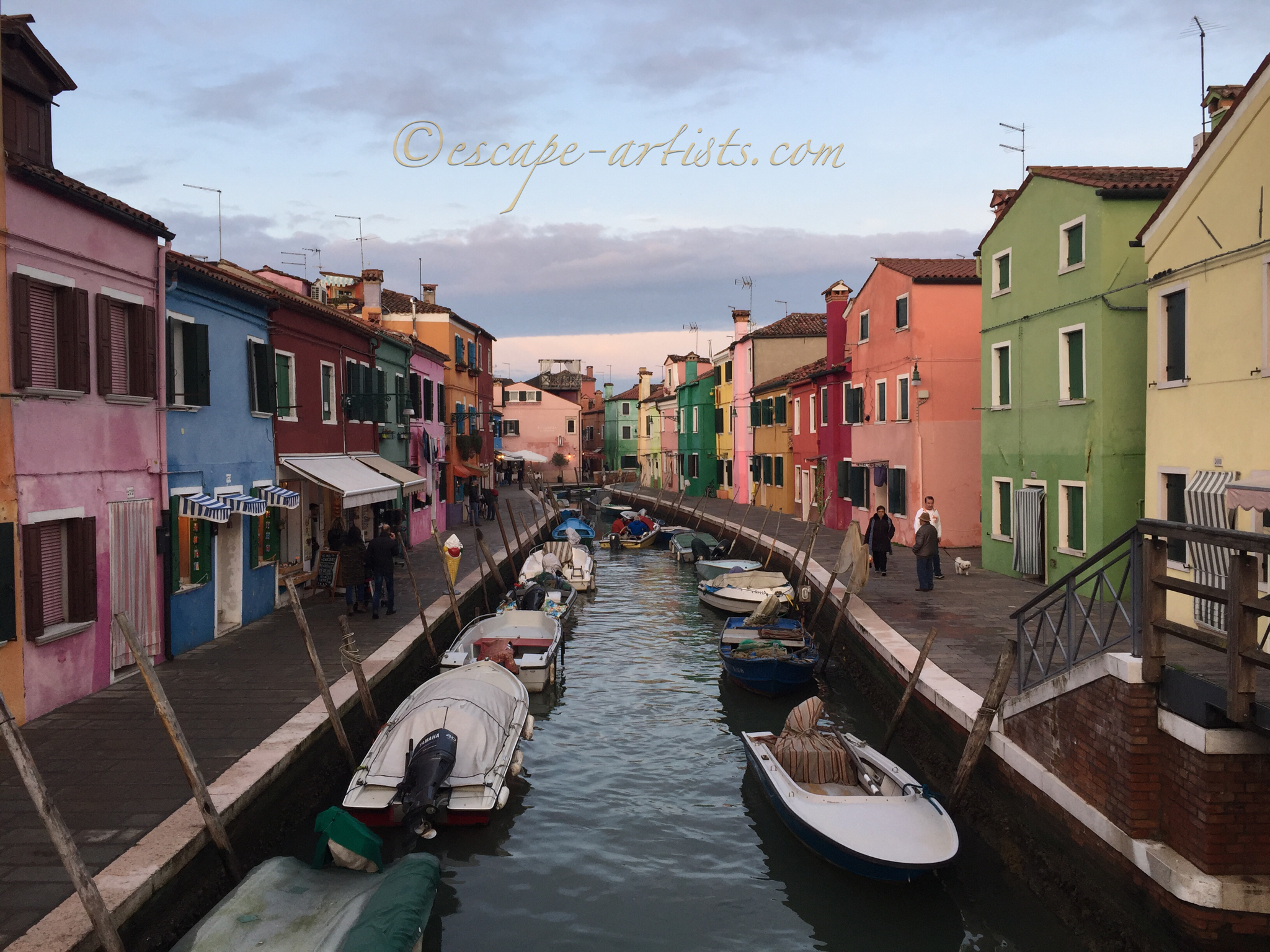 Welcome to Burano Island
Welcome to Burano Island
Enter Burano, a lesser known island sharing its lagoon with beautiful Venice. Another little sibling to its big brother, famed glass making Murano island, Burano continues to charm visitors with its characteristic colorful houses and fine works of lace. But, on my most recent trip to this peaceful reserve, I noticed something peculiar.
 Lookin a little tipsy
Lookin a little tipsy
Something didn’t seem right. Is that bell tower…leaning? I had to get a better look. After some shmoozing and curious questioning, I discovered that yes, this is indeed the ‘famous’ Campanile Storto di Burano, and it has been slightly off for a couple hundred years now.
 The Campanile Storto di Burano aka the Tower of Burano
The Campanile Storto di Burano aka the Tower of Burano
Due to the marshy conditions of the lagoon, the tower and its’ connecting church of San Martino Vescovo have undergone a number of restorations, most notably between 1703-1714. It’s lean should solely be attributed to this, but of course the locals have their own twist on the story. They say the municipal government, in an effort to make the building stand higher and boost the island’s prominence, didn’t do their weight calculations correctly, forgetting to add in the additional heft of the large iron cross on the top of the tower. This mistake cost the building enough margin of error that it started to tip during its make-over, halting construction and giving it its signature tilt.
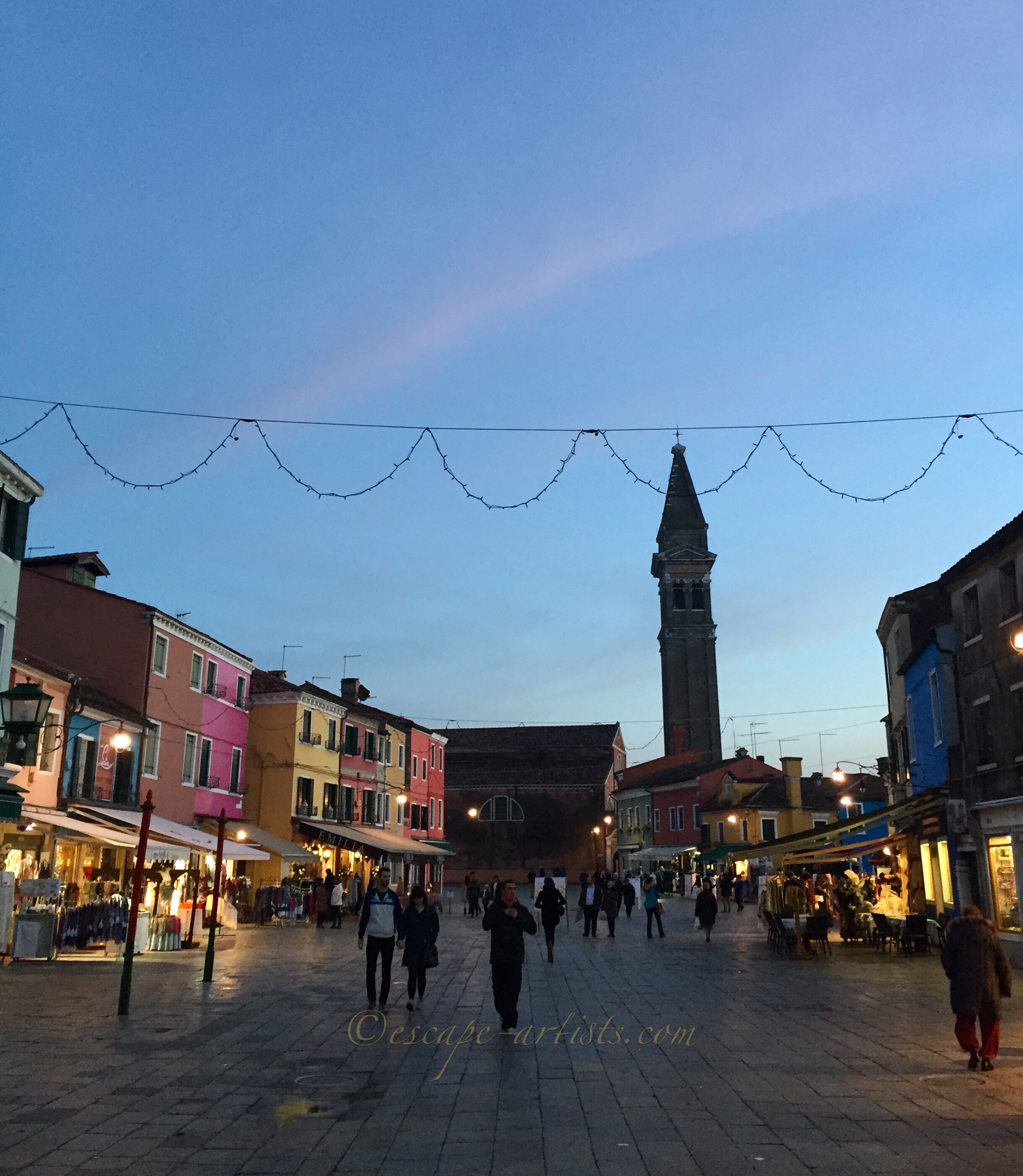 Perspective changes everything
Perspective changes everything
So there you have it, the tale of just one of Italy’s reposers, the Leaning Tower of Burano, and further proof that we all need to take ourselves less seriously and relax. Sometimes our imperfections are what makes us the most memorable part of the story.
The post The Leaning Tower of…Venice? appeared first on Escape Artists.
Borghi Più Belli 23 Nov 2016 10:20 AM (8 years ago)
In 2001, Italy had a dream. Tired of hearing the same old Rome, Florence, Venice stories from excited, wide eyed travelers, the Italian Tourism Board and National Association of Italian Municipalities (ANCI) decided to spice things up a bit and broaden the average visitor’s horizons. Born was the Borghi Più Belli Association, a foundation formed to promote smaller, beautiful towns of historical and artistic significance that might otherwise be overlooked or forgotten.
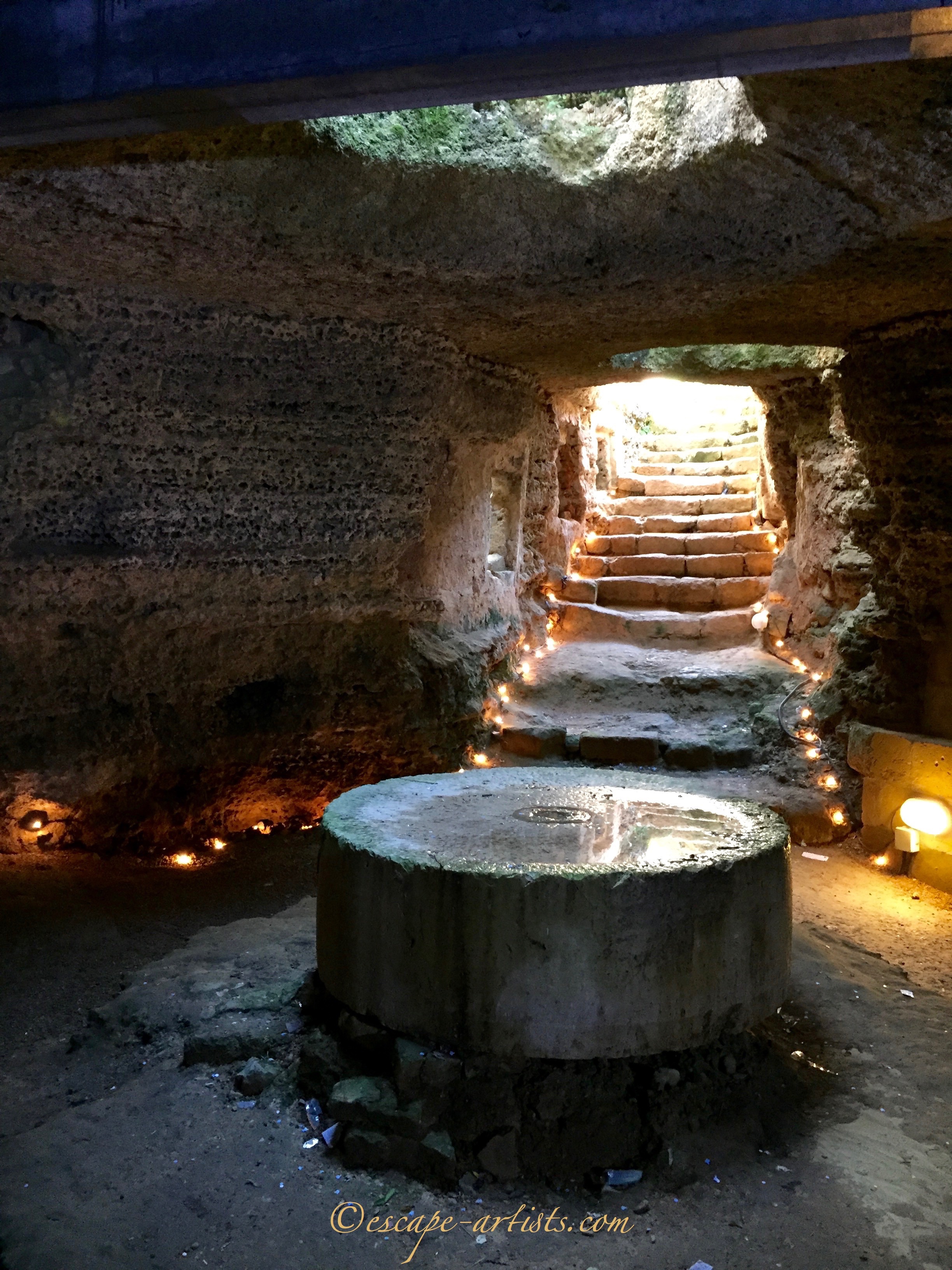
An underground Olive Oil Mill in Presicce

Go down the rabbit hole of beautiful Locorotondo
Originally 100, the list has now grown to 258 little Borghi più Belli (or Most Beautiful Towns) that personify Italy’s culture, people, and delightful beauty that continues to wow and enamor tourists from around the world. And they’re in good company! Now spread to France, Spain and Quebec, this idea of authentic and cultural tourism has inspired many other countries to highlight their secret gems and share their culture for the world to see!
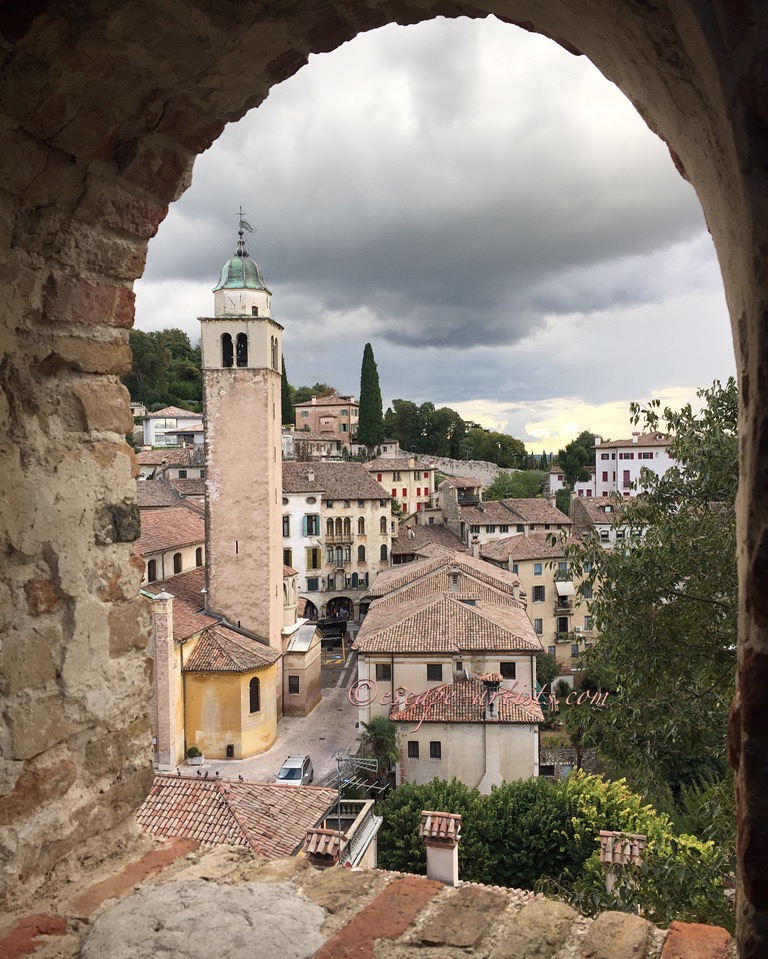
Looking out over Asolo

One of Asolo’s private villa gardens
Get to know more about these stunning towns and consider adding them into your vacation the next time you’re in Italy. May we suggest one of our very favorites and consistently voted the most beautiful in Italy, the coastal city of Otranto in Puglia. Or perhaps Elizabeth’s ancestral town of Gerace in Calabria!
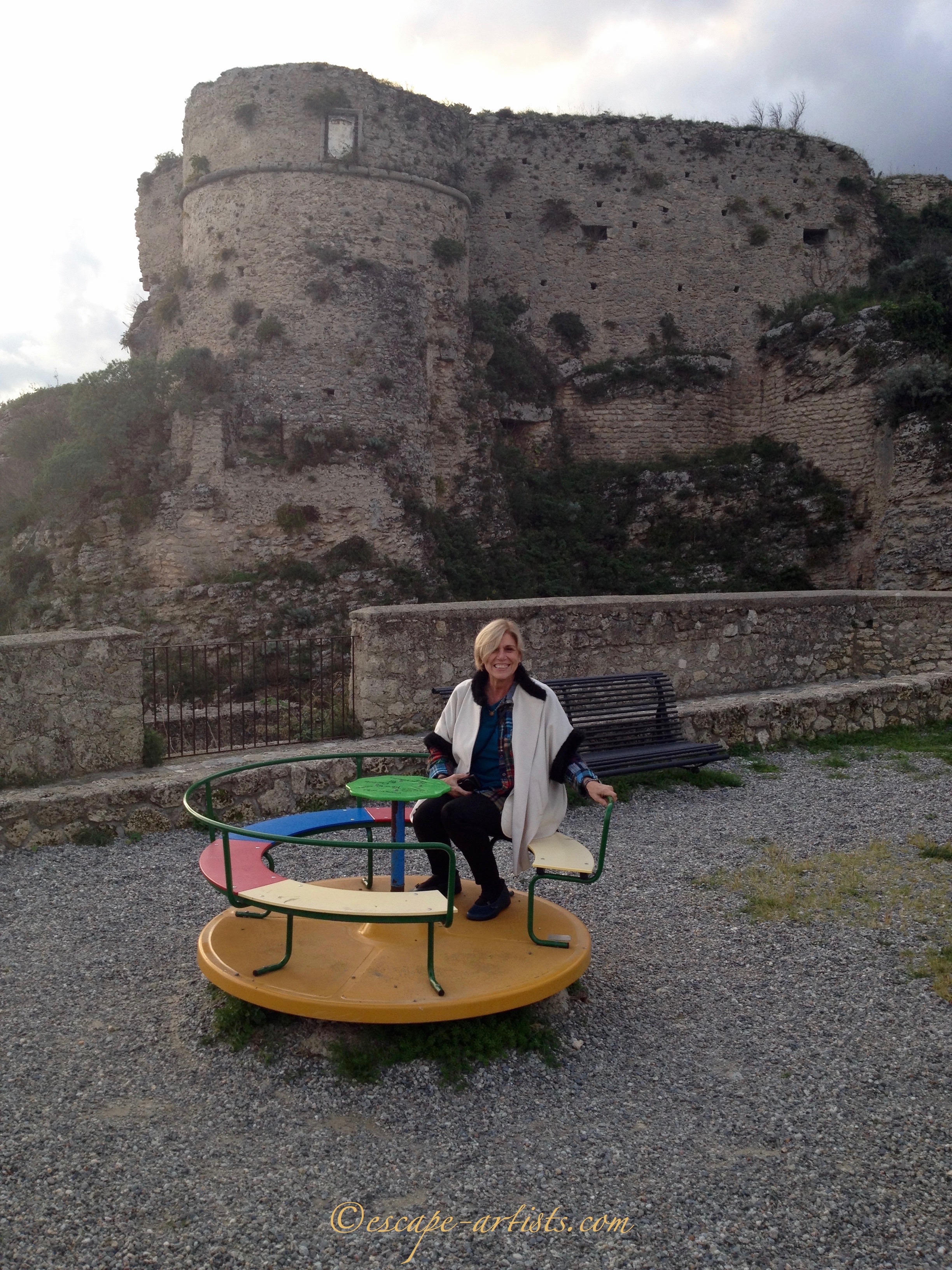
This little Escape Artist playing in her ancestral town of Gerace
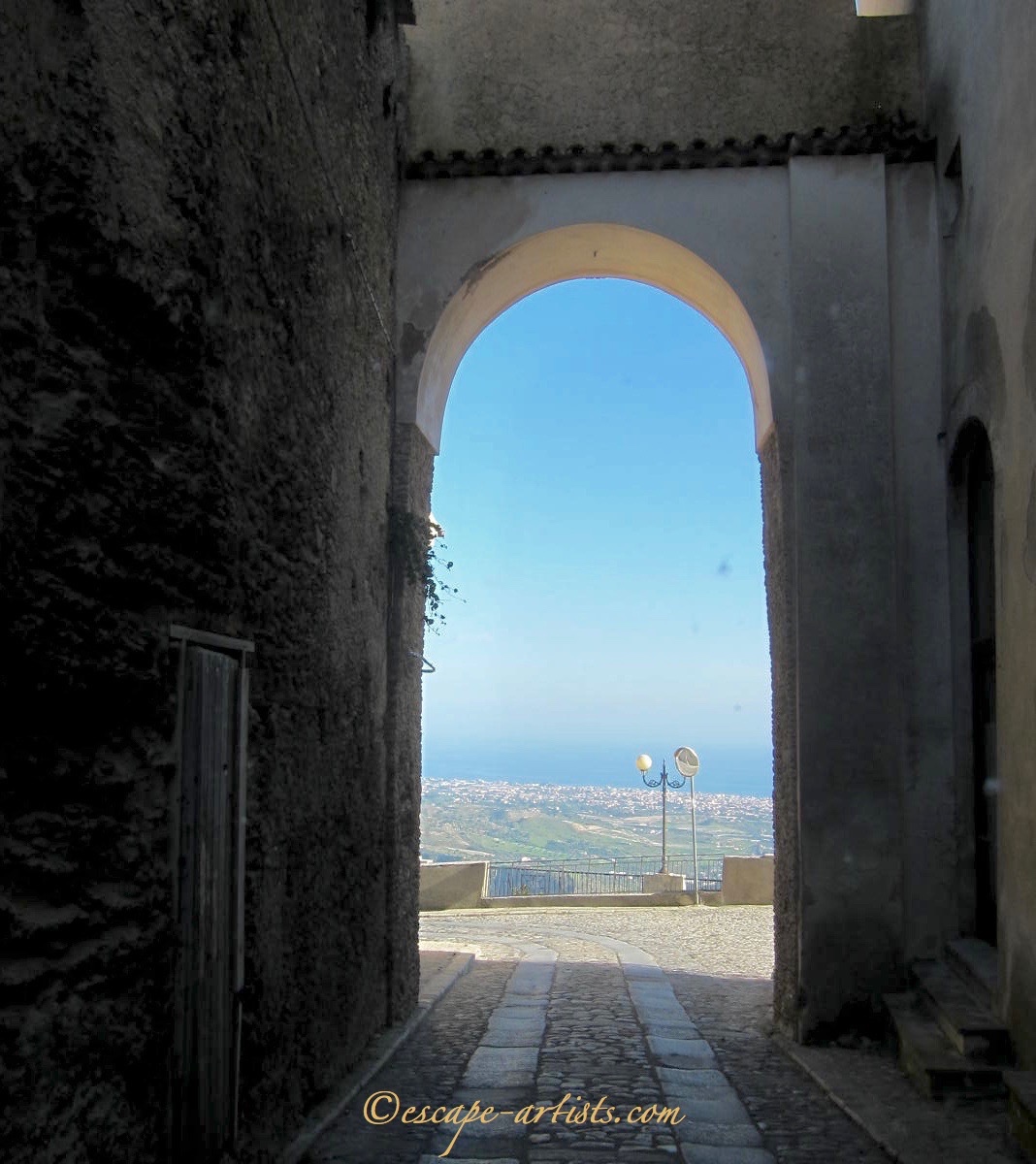
The subtle beauty of Gerace
Have you ever been to one of the Borgi più Belli in Italy? Share your photos with us and celebrate, you cultural attaché you!
The post Borghi Più Belli appeared first on Escape Artists.
Our bastardized version of Spaghetti alla Carbonara 21 Nov 2016 4:03 AM (8 years ago)
My favorite pasta and perhaps one of largest contributors to my Botticelli Belly has to be the Roman classic: Spaghetti alla Carbonara. Also known as the go-to dish when you’ve had a few too many beverages and you need something quick and easy to prepare, this Italian version of bacon and eggs is a fan favorite and also supremely easy to master, even for the less experienced cook. The sauce can be combined with any type of pasta, but you really do want to be sure to have a sufficient pork-to-mouth vehicle to really make this dish shine. This is an Americanized version of the classic; most Italians prepare this without onions/stock base and with guanciale (cured pork cheek) instead of bacon, but I love the extra sweet crunch the onions bring and let’s face it, bacon reigns supreme (and is easier to find). Give our bastardized version a try tonight!

The classic, mouthwatering Carbonara at Adelaide Restaurant
Spaghetti alla Carbonara
6 oz Applewood smoked bacon
3 tablespoons extra virgin olive oil
2 large yellow onions, sliced ½-inch (about 3 cups)
1 ½ cup chicken stock
1 box spaghetti (1 lb)
4 egg yolks
1 cup freshly grated Pecorino cheese
Coarsely ground black pepper to taste
Set a pot on to boil water for the pasta. Beat the egg yolks, some black pepper and most of the Pecorino together and set aside.
Cut bacon into ¼ inch pieces. In a large heavy skillet, heat 1 tablespoon of olive oil over medium heat. Add bacon and cook, stirring until bacon is lightly browned, but still soft in the center, about 6 minutes. If necessary, pour off all but 3 to 4 tablespoons of fat from the pan. Add onions and cook until wilted, but still with a crunch, about 4 to 5 minutes. Add stock, bring to a boil and adjust the heat to a lively simmer. Cook until the liquid is reduced by half.
Add a generous couple of pinches of salt to the now boiling pasta water and cook pasta according to the instructions on the package, maybe 1 minute less if you’re an al dente kinda kid, it’s gonna cook a little more in the sauce. Be sure to save about a cup of the cooking water once the timer’s almost up. Once cooked al dente, drain the pasta and add it to your saucy bacon pan. Stir over medium heat until sauce and pasta have become one delicious being; if it’s seeming a little sticky, add some pasta water.
Once combined, remove the pan from the heat and add egg yolk mixture slowly, constantly stirring and tossing. The last thing we want is eggs starting to solidify within the dish! Garnish with remaining cheese, some freshly ground black pepper, and serve!
Makes 4 servings.

Maybe my favorite pasta choice, Rigatoni alla Carbonara
The classic pastas of Rome: Carbonara, Cacio e Pepe, and Amatriciana.
The post Our bastardized version of Spaghetti alla Carbonara appeared first on Escape Artists.
Murano glass: the (semi) lost art 14 Nov 2016 9:27 AM (8 years ago)
The beauty, the delicacy, the exquisite luxury of Murano glass; even if you’re not so sure what it is, you’ve certainly heard of the name. Named after the little island off of Venice where it is produced, Murano glass is the ultimate signature of elegance and wealth.

Just a little something for the game room at Villa Benveduti
Mostly known for its intricate chandeliers and their colorful floral accents, these artisan glass blowers can make anything from little glass figurines, to candle holders, to larger than life landscapes and sculptures of historical personalities. Each piece of art is meticulously labored over and can take months up to years to produce one work, with the price tag to prove it.

Now That’s a Party
However, as more glamorous and less laborious work calls to the younger generations of Italian artisans, and as knock-off’s from Asia thrive from the less demanding prices, this art form is slowly fading away. This is not a trade you can simply apply for, you must be born into a Venetian glass making family and be taught from childhood. With less than 1,000 Murano glass blowers practicing today, now is the moment to come visit the workshops, speak to the creators, and see for yourself these stunning pieces of Venice’s history.
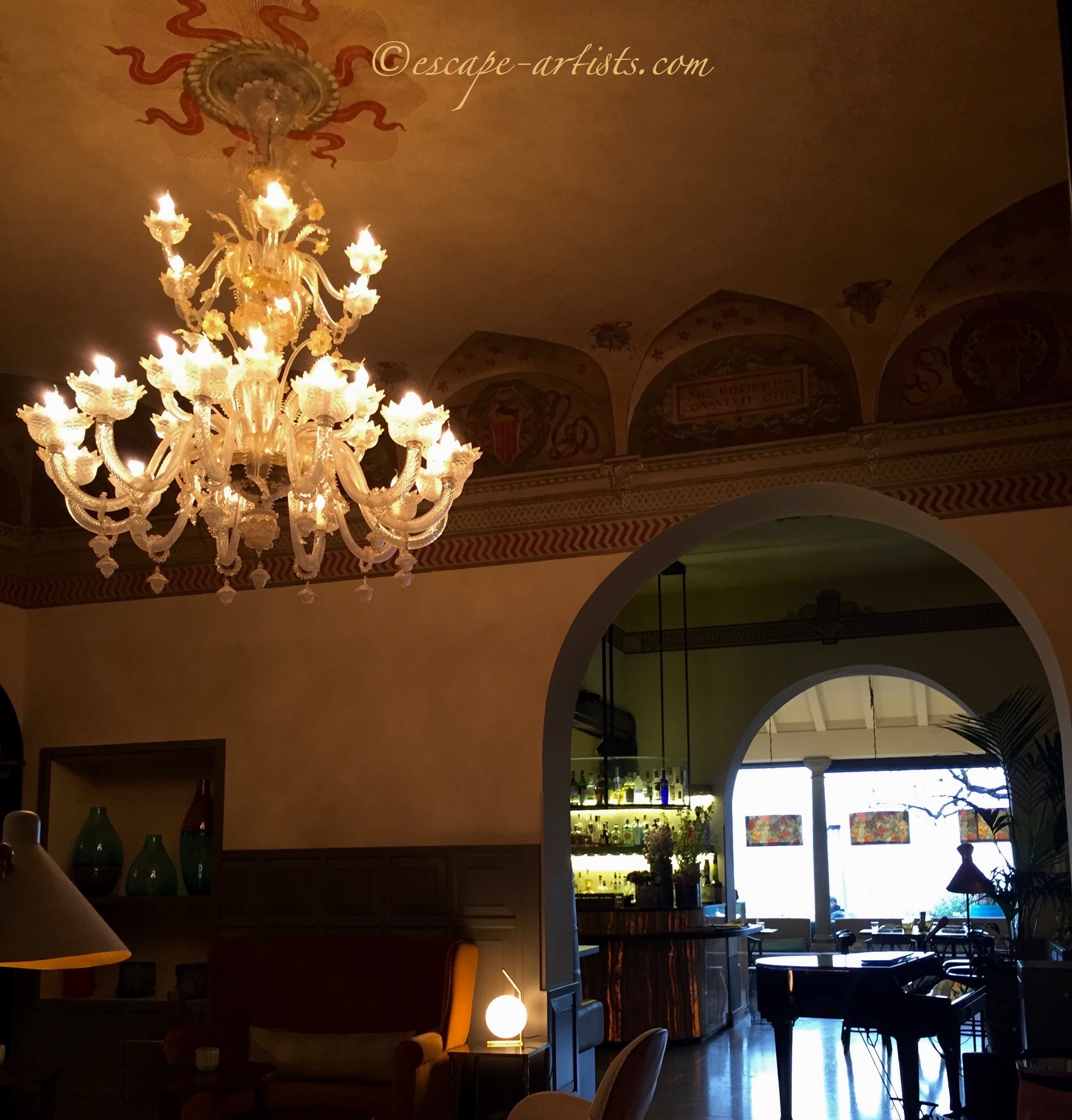
An accent piece at L’Albereta Resort

Over 88 individual pieces comprise this inestimable work of art at Ca’ Marcello
The post Murano glass: the (semi) lost art appeared first on Escape Artists.












